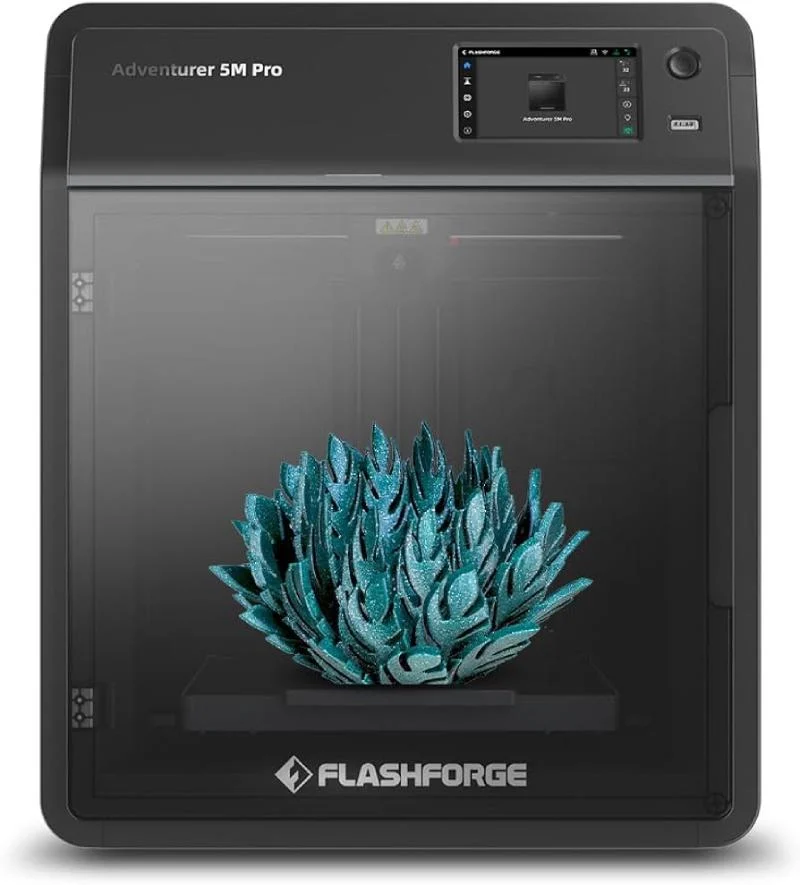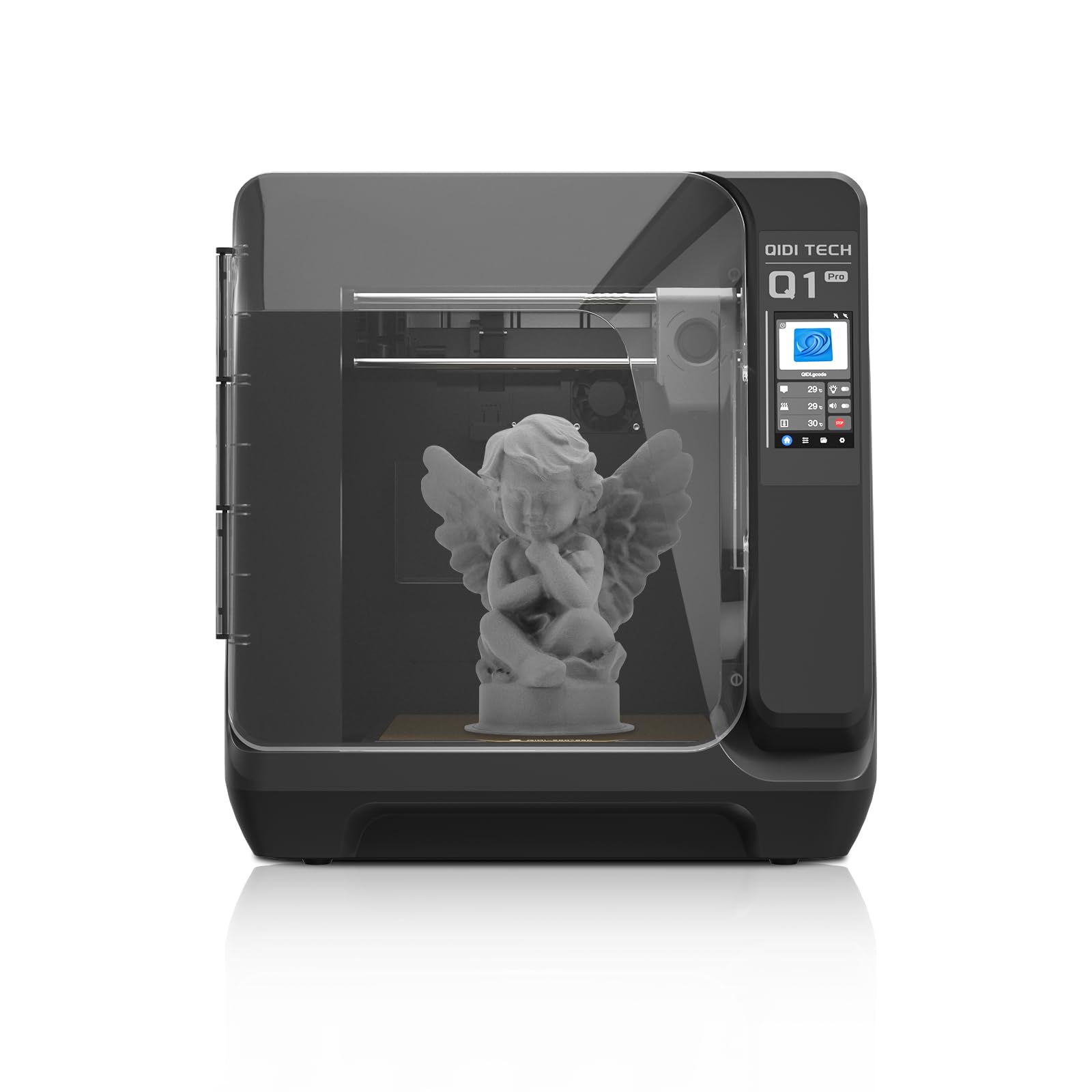Compare Adventurer 5M PRO vs Q1 PRO
Comparison between the best 3D printers
Choose the best 3D printer at the best price. The cheapest 3D printers are here.
Buy a 3D printer here with 3D Fila.
 |
 |
|
| Model | Adventurer 5M PRO |
Q1 PRO[BUY Q1 PRO] |
| Printing Material | Filament | Filament |
| Buy Filament for Flashforge Adventurer 5M PRO | Buy Filament forQIDI Q1 PRO | |
| Estimated price | $599,00 | $449,00 |
| Manufacturer | Flashforge | QIDI |
| Release Year | 2023 | 2024 |
| Print Volume [mm] | 220x220x220 | 245x245x245 |
| Printer Size [mm] | 380x400x453 | 467x477x489 |
| Weight [kg] | 10,8 | 20 |
| Power Loss Recovery | YES | YES |
| Enclosed printer | YES | YES |
| Bed Leveling | Automatic | Automatic |
| Filament End Sensor | YES | YES |
| Bed type | Heated | Heated |
| Power supply system | Direct Drive | Direct Drive |
| Standard nozzle | 0,4 | 0,4 |
| Maximum Nozzle Temperature [°C] | 280 | 350 |
| Maximum Bed Temperature [°C] | 110 | 120 |
| Maximum printing speed [mm/s] | 600 | 600 |
| Filament holder | YES | YES |
| Camera for supervision | NO | NO |
| Recommended filaments | PLA, PETG, TPU, PLA-CF, PETG-CF | PLA、ABS、ASA、PETG、TPU、PC、PA、PA-CF、PET-CF、PAHT-CF etc. |
| Recommended slicers | FlashPrint 5 | QIDI Slicer/Cura/Simplify 3D/ORCA/PRUSA Slicer |
| Maximum Resolution [mm] | 0,1 | 0,1 |
| Processor | Cortex-A53,64-bit Processor | |
| Display | Touchscreen 4,3'' | Touchscreen 4,3'' |
| Power Supply | 350 W | 350 W |
| Connectivity | Wifi / Ethernet / USB | WiFi/USB Flash Drive/Ethernet Cable |
| Operating systems | Windows, Linux, Macbook | Windows, Linux, Macbook |
| Date of registration in the system | 2024-07-09 | 2024-07-09 |
| Release date | 2023 | 2024 |
| Extra features | The Flashforge Adventurer 5M PRO features advanced features such as a CoreXY motion system, direct drive extruder, print speeds of up to 600mm/s and maximum acceleration of 20,000mm/s². It features fast nozzle changes, automatic calibration, active vibration compensation, camera monitoring, time-lapse video, HEPA and carbon filters for particles and VOCs, and an intuitive 4.3-inch touchscreen interface. Ideal for printing materials such as PLA, PETG, ABS and TPU. | The QIDI Q1 Pro 3D printer stands out for its Core XY structure and heating chambers that reach up to 60ºC, ideal for advanced materials such as ABS and Nylon. It features Klipper firmware, an automatic leveling system, a high-flow extruder with a double metal nozzle and a hotend that reaches 350ºC. It offers connectivity via Wi-Fi, USB and Ethernet, as well as a 1080p camera for remote monitoring and an intuitive touchscreen for easy operation. |
| Support for multiple colors and materials (AMS and CFS) | NO | NO |
Notes * |
||
| Cost-benefit | 7 / 10 | 8 / 10 |
| Hardware | 4 / 10 | 5.4 / 10 |
| Tela | . | . |
| Print volume | 3 / 10 | 3 / 10 |
| Performance | 5 / 10 | 5 / 10 |
| [BUY Q1 PRO] |
Conclusion |
| In summary, both the Adventurer 5M PRO and the Q1 PRO exhibit distinct advantages that cater to varying needs in the 3D printing market. The Adventurer 5M PRO, manufactured by Flashforge, boasts a user-friendly design with advanced features such as a high-speed CoreXY motion system, automatic calibration, and a selection of notable safety features like HEPA filters. It is well-suited for generalized printing of common filaments such as PLA and PETG, making it a strong contender for beginners and hobbyists. On the other hand, the Q1 PRO, produced by QIDI, offers a robust capability to print with a wider array of materials, including high-performance filaments like ABS and Nylon, which could appeal to more experienced users or professionals requiring versatility in material selection. Its upgraded nozzle and hotend temperatures provide flexibility for advanced applications. While the Q1 PRO has a slightly larger print volume and a more robust hardware profile, its higher price point could be a consideration for budget-conscious buyers. Conversely, the Adventurer 5M PRO's excellent performance coupled with its competitive pricing makes it a great value for those who need a reliable 3D printer without the complexity of advanced material handling. Ultimately, the choice between these two models should be guided by the specific requirements of the user—whether prioritizing ease of use and practicality or the ability to handle a diverse range of advanced materials and applications. |

